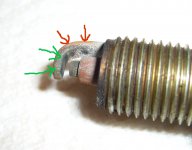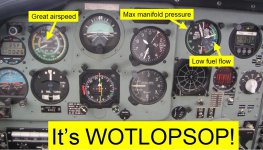You've correct on this. There's 3mm protrusion on the DCPR7E plugs so that comes to 2mm. Apologies for doubting you.
Well I did actually measure them before posting
check out for Denso equivalents
The IXU22/VXU22's are a direct (but probably better quality) equivalent for the DCPR7EIX, ie 0.8mm gap & a 3mm tip projection. FIAT specify plugs with 1.0mm gap & a 5mm tip projection for the 169A4000 engine. AFAIK there is no equivalent Ir plug so it's necessary to trade off the extra 2mm tip projection for the benefits of iridium - hence my experiment to find out if it's worth it. For earlier versions of the 1.2 FIRE which use the DCPR7E-N-10's, the Ir plugs under discussion are a direct replacement apart from the gap.
Obviously the gap can (with care) be adjusted; easier on the NGK's than the Denso's since you don't have to worry about disturbing the V-groove alignment (the DCPR7EIX has a flat faced side electrode). For now I've left them at 0.8mm as that gives instant starting & good performance at low rpm. Folks with aspirations at the other end of the power curve might have more reason to open out the gap to 1mm.
However, inspection of the removed plugs shows there is an additional risk with a larger gap - it's much easier for the spark to mistrack horizontally to the base of the side electrode & this actually happens in practice with the 'approved' ZKR7A's. Not easy to photograph - you really need a magnifying glass to see it - but I'll try to put something up here if I can get a clear shot.
It's somewhat incredible that NGK claim it would take 4 years to develop an Ir version of the ZKR7A. Perhaps Denso might care to rise to the challenge?
Last edited:



